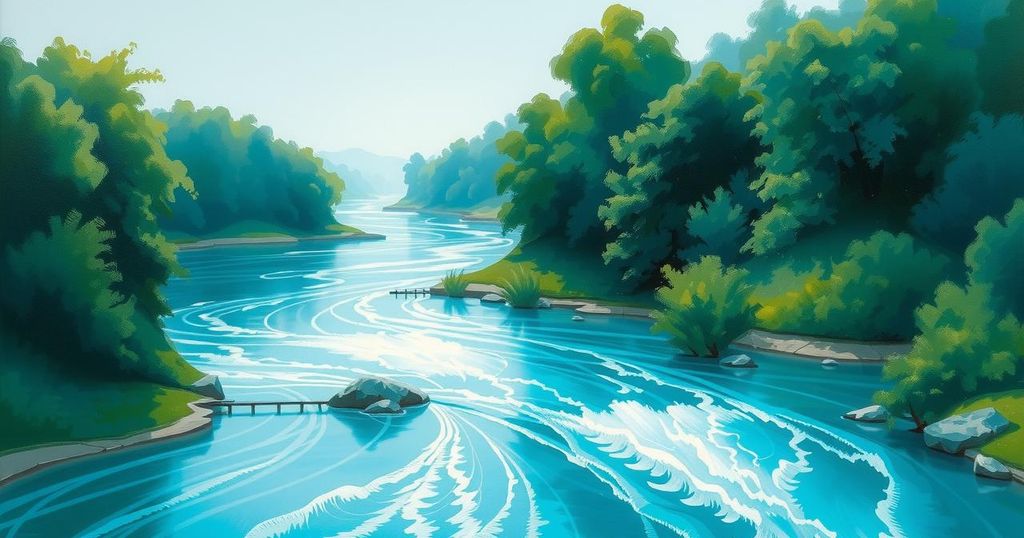Morocco is investing heavily in a “water highway” to supply cities with water, redirecting flows from northern rivers. The initiative has reportedly helped prevent a water crisis for millions. However, experts are questioning its sustainability amid ongoing drought conditions and climate change.
Morocco is investing hundreds of millions of dollars to develop a system known as the “water highway,” which channels water from northern rivers to address water shortages in southern cities. The government reported that $728 million has been spent thus far to redirect excess flow from the Sebou River to supply drinking water to Rabat and Casablanca. Future plans aim to extend this project to include Marrakesh, increasing the water supply to this vital region.
Officials assert that the project has been crucial in preventing a crisis for approximately 12 million residents. Mahjoub Lahrache, a senior official in the agriculture ministry, noted, “Transferring surplus water from the Sebou basin in the north allowed us to prevent about 12 million people from running out of water.” A significant threat emerged in late 2023, when Rabat’s main reservoir faced near depletion, intensifying the urgency for sustainable water solutions.
Morocco experiences stark rainfall disparities, which greatly affect water availability. Water Minister Nizar Baraka stated, “Fifty-three percent of rainfall occurs in just seven percent of the national territory.” Historically, the surplus flow from northern rivers reached the ocean even during dry spells, which the water highway project aims to utilize by constructing a diversion dam in Kenitra. This dam captures water from the Sebou River and transports it through a 67-kilometre underground canal to urban populations.
Inaugurated in August, the water highway has provided over 700 million cubic metres of potable water to the two cities by early March. However, concerns have been raised regarding the longevity of water surpluses from the Sebou and other rivers amid a six-year drought in Morocco which has led to a drastic drop in annual water supplies, from an average of 18 billion cubic metres in the 1980s to approximately five billion today.
Despite some rainfall in March, overall precipitation continues to be significantly below historical averages, and rising temperatures exacerbate evaporation rates. Nabil El Mocayd, a water and climate researcher, indicated that future climate scenarios may lead to further declines in rainfall in northern basins, complicating the sustainability of the water highway. He cautioned, “Future scenarios indicate that northern water basins will be significantly more affected by climate change than those in the south over the next 60 years.”
High demand for irrigation water remains a pressing challenge, particularly given that agriculture employs nearly one-third of Morocco’s workforce. Researcher Abderrahim Handouf noted the necessity for farmers to adopt more efficient practices. While he described the water highway as “an effective solution in the absence of alternatives,” he urged for investment in desalination technologies to address the growing challenges posed by climate change and ensure sustainable water access for urban centers.
In conclusion, Morocco’s substantial investment in the water highway represents a proactive measure to alleviate urban water shortages; however, experts express concerns regarding the project’s long-term sustainability in light of climate change. The ongoing drought and rising temperatures threaten the very resources the project aims to exploit. While the water highway is presently beneficial, it necessitates careful consideration and potential adaptation to address future water availability challenges, including initiatives in irrigation efficiency and desalination.
Original Source: www.thedigitalcourier.com




